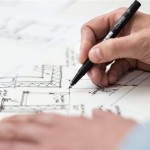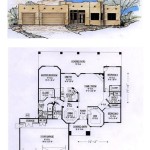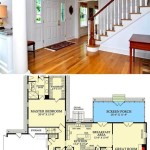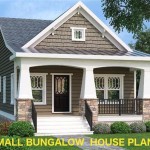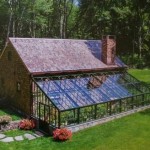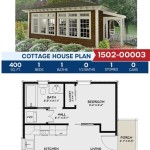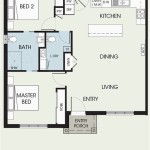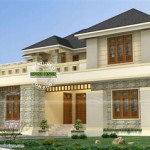Blue Bird House Plans: Finding Free Options and Building a Successful Habitat
Attracting bluebirds to a garden or property can be a rewarding experience. These vibrant birds are known for their beautiful plumage and beneficial insect-eating habits. Providing them with suitable nesting sites through the installation of birdhouses is a key step in supporting their populations. Accessing free bluebird house plans can make this endeavor both affordable and accessible for many individuals.
This article explores the availability of free bluebird house plans, examines critical design considerations for successful nesting, and outlines essential factors for placement and maintenance of the birdhouse. This information aims to equip individuals with the knowledge needed to construct and maintain a safe and attractive habitat for bluebirds.
Locating Free Bluebird House Plans
Numerous resources offer free bluebird house plans online. These plans vary in complexity, material requirements, and design aesthetics. Organizations dedicated to bird conservation, governmental agencies, and individual enthusiasts often provide these plans as a public service to promote responsible birding practices.
Websites such as the Cornell Lab of Ornithology’s NestWatch program frequently contain links to reputable sources of bluebird house plans. State wildlife agencies, such as those found in states with significant bluebird populations (e.g., New York, Pennsylvania, Ohio), also often host or link to free plans. Search engines can be utilized with keywords like "free bluebird house plans," "DIY bluebird house," or "bluebird nesting box plans" to discover a range of options.
When evaluating free plans, it is critical to scrutinize their source and design. Plans originating from reputable conservation organizations are more likely to incorporate proven design features that promote successful nesting and minimize risks to the birds. Prioritizing plans that include detailed instructions, material lists, and clear diagrams is also advisable.
Furthermore, it's important to examine user reviews or comments associated with the plans, if available. This feedback can provide valuable insights into the plan's accuracy, ease of construction, and overall effectiveness in attracting bluebirds. Plans that have been tested and refined based on user experiences are generally more reliable.
Key Design Considerations for Successful Nesting
The design of a bluebird house plays a crucial role in its ability to attract bluebirds and provide a safe and productive nesting environment. Several key features are essential for optimal success. These include appropriate dimensions, proper ventilation and drainage, predator protection measures, and ease of monitoring and cleaning.
Entrance hole size is perhaps the most critical design element. A hole that is too large will allow entry to larger birds, such as starlings or house sparrows, which are aggressive competitors for nesting sites and may displace or harm bluebirds. A 1 ½ inch diameter entrance hole is generally considered ideal for Eastern Bluebirds. For other bluebird species, such as the Mountain Bluebird or Western Bluebird, slightly different hole sizes may be recommended, so consulting species-specific guidelines is important.
Internal dimensions also matter. The floor of the nest box should be approximately 5 inches by 5 inches, and the height from the floor to the bottom of the entrance hole should be roughly 6 inches. These dimensions provide sufficient space for the bluebirds to build a nest and raise their young without being too spacious, which could make the nest more vulnerable to temperature fluctuations. The overall depth of the box should be deep enough to prevent young birds from prematurely fledging, thus making them vulnerable to predators.
Proper ventilation is essential to prevent overheating inside the birdhouse, especially during the warmer months. Small ventilation holes near the top of the box allow for air circulation. Similarly, drainage holes in the floor of the box prevent the accumulation of rainwater, which can waterlog the nest and harm the chicks. Four or five ¼-inch diameter holes are typically sufficient for drainage.
Predator protection is another crucial consideration. Mounting the birdhouse on a smooth metal pole can deter climbing predators such as raccoons or snakes. Adding a predator guard, such as a metal cone or baffle, below the birdhouse provides an additional layer of protection. Avoid perches below the entrance hole, as these can assist predators in accessing the nest.
Ease of monitoring and cleaning is also important for long-term maintenance. A hinged roof or side panel allows easy access to the interior of the birdhouse for monitoring nest progress and removing old nesting material after each nesting season. Regularly cleaning the birdhouse reduces the risk of parasite infestations and ensures a clean and healthy environment for future broods.
Placement and Maintenance for Bluebird House Success
The location and ongoing maintenance of a bluebird house are vital for attracting birds and ensuring their continued success. Selecting the right habitat, considering potential competing species, and implementing a routine maintenance schedule are all crucial factors.
Bluebirds prefer open habitats with scattered trees or shrubs for perching and foraging. Ideal locations include pastures, meadows, orchards, and golf courses. Avoid placing birdhouses in heavily wooded areas or areas with dense undergrowth, as these habitats are less attractive to bluebirds and may harbor more predators.
Consider the direction the birdhouse faces. Facing the entrance hole towards the east or southeast is generally recommended, as this provides morning sun and protection from prevailing winds. Avoid facing the birdhouse towards direct sunlight during the hottest part of the day, as this can lead to overheating inside the box.
Mount the birdhouse at a height of approximately 5 to 6 feet above the ground. This height provides adequate visibility for bluebirds and deters some predators. Use a smooth metal pole or post for mounting, and consider installing a predator guard as described previously.
Monitor the birdhouse regularly, especially during the nesting season. Check for signs of bluebird activity, such as nest building or egg laying. Remove any nests built by competing species, such as house sparrows or starlings. Regularly monitoring also allows early detection of parasites or other problems that may require intervention.
Clean the birdhouse after each nesting season, typically in late summer or early fall. Remove all old nesting material and scrub the interior of the box with a mild bleach solution (one part bleach to nine parts water). This helps to eliminate parasites and bacteria. Allow the birdhouse to dry thoroughly before replacing the lid or side panel.
In addition to annual cleaning, inspect the birdhouse regularly for any damage or deterioration. Repair or replace any damaged components, such as a cracked roof or a loose side panel. Keeping the birdhouse in good repair will extend its lifespan and ensure its continued suitability for nesting bluebirds.
Finally, consider establishing a bluebird trail, which involves installing multiple birdhouses along a predetermined route. This can increase the chances of attracting bluebirds to a property and provide valuable habitat for these birds. A distance of approximately 100 to 300 feet between birdhouses is generally recommended to reduce competition between nesting pairs.

Blue Bird House Plans Print Release Woodworking Nestor For Eastern Birds Of Preservation Readi Bluebird

Eastern Bluebird Birdhouse 70birds Plans Index

Bluebird Birdhouse Plans Complete Step By Instructions For Building A Bird House

Free Bluebird House Plans Multiple Designs

Bluebird House Plans Free Construct101

Free Bird House Plans Bluebird Purple Martin Wren More Kits

Creating Bluebird Habitat Free House Plans

Bluebird House Plans Free Construct101

Birdhouse And Nest Box Plans For Several Bird Species The Birders Report

Bluebird House Plans

